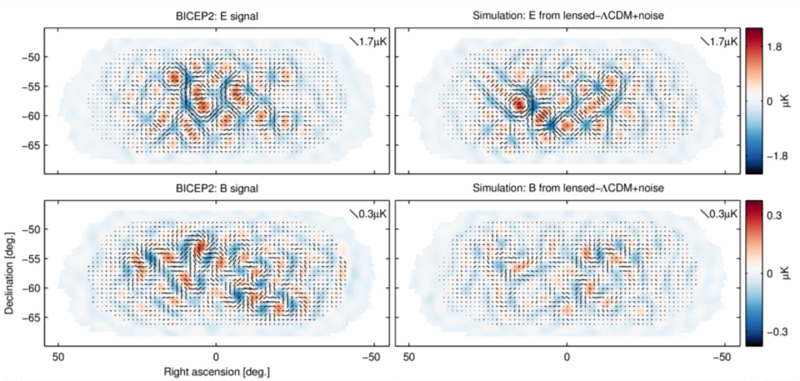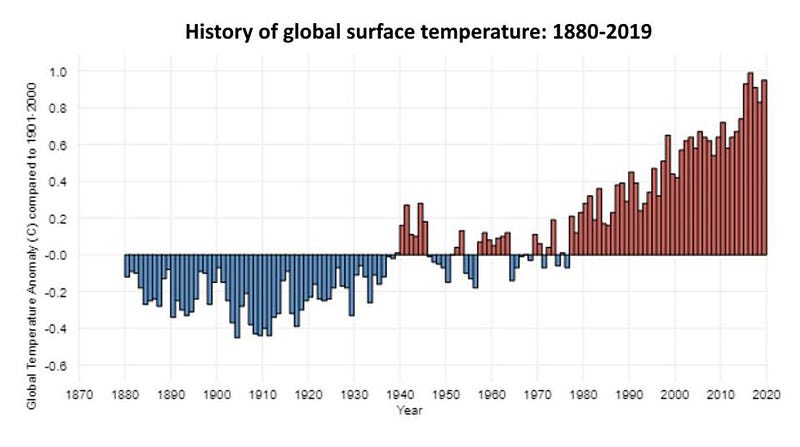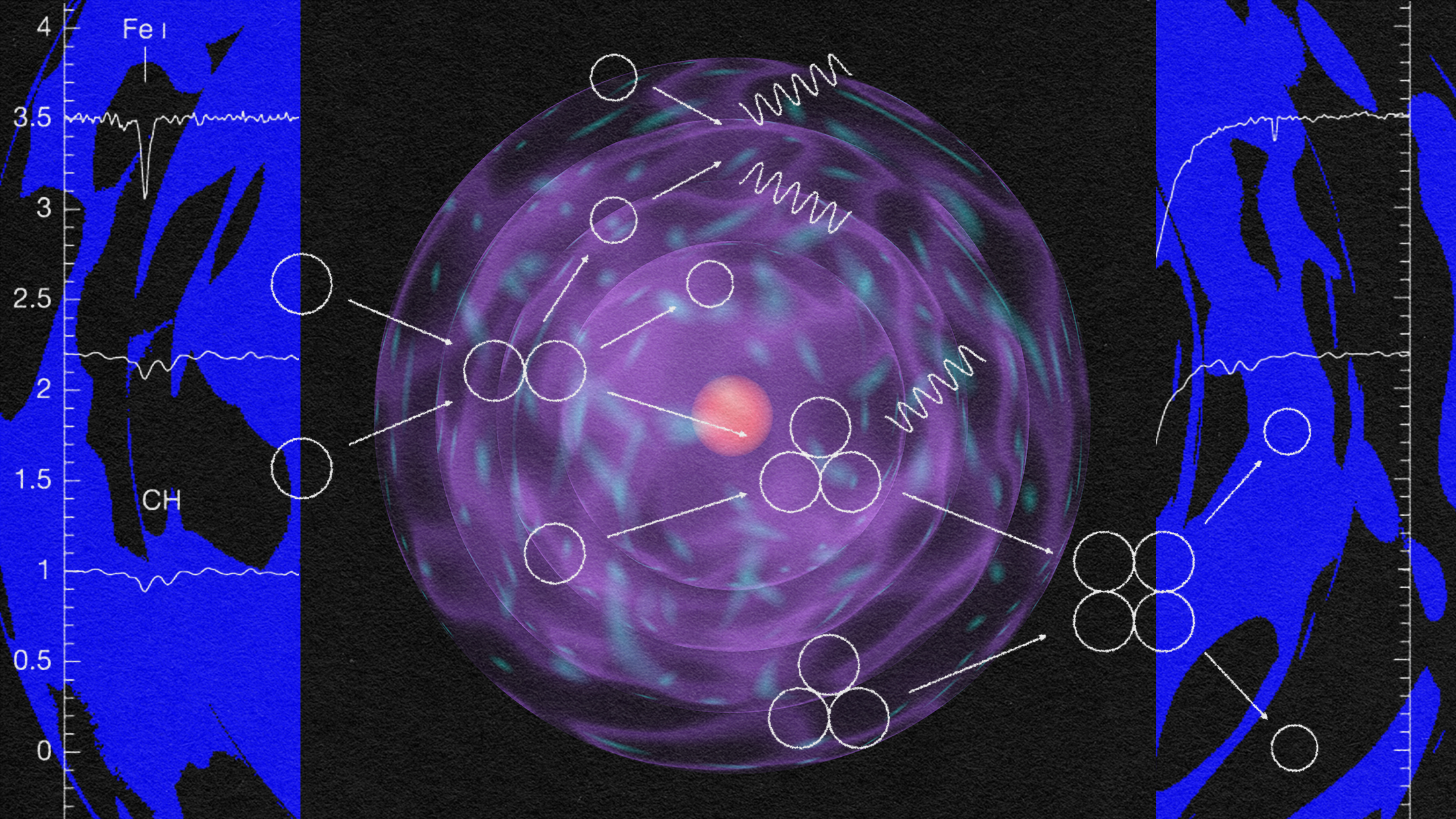Following The Scientific Consensus Is The ‘Least Wrong’ Line Of Thought

All scientific theories, at some level, are wrong. That’s why consensus is so vital.
There are two important and common words that, when used scientifically, have a very different meaning than how we use them in everyday language: theory and consensus. These two words, in our commonplace usage, have meanings that imply a large degree of uncertainty. A theory is merely a thought that anyone can put forward: an idea, a wild guess, or even baseless speculation all count as “theories” the way we talk about them in our daily lives, where ideas like gravitation and that the Earth is flat get lumped in with the same word: theory.
While most of us recognize the difference between a scientific and non-scientific use of the word theory, this line is even blurrier when it comes to the notion of a consensus. Consensus, when we use it commonly, simply means, “most people believe this thing,” but that doesn’t necessarily mean such a thing is correct or true. Consensus could apply just as equally to statements like “the Earth is warming” as it could to those like “ninjas are cooler than pirates.”
However, when a scientist talks about consensus, they are talking about something far more powerful: the least wrong approximation of reality supported by the full suite of evidence and the overwhelming majority of professionals in a particular field. Here’s how following the scientific consensus empowers all of us who do so, and imperils all who reject it.

Theory: this is the starting point of it all. If we ever want to understand what it means to abide by or reckon with the scientific consensus on an issue, we have to go back to this definition: that of a theory.
I’m not talking about the colloquial definition, which is any proposed explanation for why some phenomenon occurred. (E.g., flat Earth theory.)
Nor am I talking about the mathematical definition: a self-consistent set of axioms or postulates that allow the construction of a framework. (E.g., string theory.)
I’m also not talking about a speculative extension to the mainstream, accepted theories that we have that don’t have adequate supporting evidence behind them. (E.g., supersymmetry theory.)
And finally, I’m not talking about an idea that was once viable, until it failed to explain key pieces of evidence, conflicting with a key measurement or observation. (E.g., Lamarckian evolution.)
Instead, when scientists most frequently talk about theories, they talk about the accepted theories that are overwhelmingly supported by the evidence: the starting point for modern science. General Relativity is our theory of gravity; the Standard Model is our theory of elementary particles; genetics and Darwinian evolution are our theory of how living organisms pass on their traits to future generations; etc. When scientists talk typically mention a theory, they’re discussing what’s already been robustly established and outlining the framework for all current and future discussions.

The novel phenomenon: ideas like “scientific consensus” never come up in a vacuum. Instead, they come up in discussions surrounding an issue because something new, important, or unexpected has been observed to occur.
We observe that the carbon dioxide concentration in the atmosphere is rising, that the pH of the oceans, globally, are acidifying, and that extreme temperatures are being recorded more frequently all over the world.
We observe that an astrophysical cataclysm occurred some 130,000,000 light-years away, and that gravitational waves arrived ever-so-slightly before the very first electromagnetic signal did: by 1.7 seconds.
Or we observe the emergence of a novel disease in humans, the genetic sequence of which is similar to, but evolutionarily divergent from, other known disease-causing agents in the same family.
Although these may seem like wildly disparate examples from a variety of scientific fields — the climate change problem in the context of environmental and geological/atmospheric sciences, the astrophysical neutron star-neutron star merger observed in both gravitational waves and electromagnetic radiation, and the origin of SARS-CoV-2 in the context of virology, disease ecology, and epidemiology — scientists take the same approach in every instance.

Identify the null hypothesis: this is an unspoken step that any scientist will recognize, but that simply doesn’t occur to most non-scientists. When we say “the null hypothesis,” what we mean is, “what explanation for this novel phenomenon would indicate that its emergence is already accounted for by the known laws, theories, and frameworks that are already in place to elucidate the Universe?”
The null hypothesis would mean that, sure, you’ve discovered a new phenomenon, but no new rules or outside influences need to be invoked to explain it.
The null hypothesis sometimes means, “things are behaving as they’ve always behaved, and what we’re observing is within the realm of natural variation.” Numerous announced discoveries that were later overturned occurred because of an unlikely fluctuation in the data that regressed to the mean when more data was taken. Ruling out the null hypothesis, however, can be an incredibly powerful achievement. In the case of the temperature of the Earth, going all the way back to the earliest global temperature records in the early 1880s, the null hypothesis is now ruled out at greater than 5-sigma confidence, with less than a 1-in-3.5 million chance of it being a fluke.

So, we’ve found something’s new. Now what? Again, there’s an unspoken step that scientists take that’s rarely discussed. Scientists often ask themselves an important question, particularly when a novel phenomenon crosses the threshold of ambiguity and whose existence can now be considered non-controversial.
The Earth is warming, the oceans are acidifying, and the carbon dioxide concentrations have been rising, too.
The arrival time of gravitational waves and electromagnetic signals have been accurately measured and their origin point has been confirmed to be identical, and yet the gravitational waves still get there 1.7 seconds earlier, even though both should travel at the same speed: the speed of light.
And the novel coronavirus SARS-CoV-2 did, in fact, emerge in humans in late 2019, even though the precise origin of how this virus found its way into the human population remains obscure.
What we typically do in this situation is resort to what some scientists also call “the null hypothesis” but which I prefer — to distinguish it from our earlier “nothing to see here” example — to call the default hypothesis: the idea that everything needed to explain this emergent phenomenon is already known, but that we just need to correctly identify the important contributors.

Identifying what matters: a lot of people have this misconception that science is wedded to what we’ve already established, and that scientists are incredibly resistant to new ideas.
This is not how it works at all, and although you can certainly find people — even a few scientists among them — who feel that way, the truth is far less exciting.
The reality is that what’s already been established, scientifically, provides us with an incredibly strong and versatile foundation to accommodate almost any new phenomenon we observe.
The default hypothesis, in practically any case we encounter, is that there is a completely mundane explanation for this novel phenomenon that only relies on correctly applying the science of what’s already known to the situation at hand. The default hypothesis is the least radical suggestion of all: that you might need to add an additional ingredient or component in order to get the full story out, but that when you do and you apply the underlying scientific rules correctly, you wind up fully explaining everything that you observe.

Recognizing alternatives for what they are: of course, sometimes there really are novel rules that come into play, and oftentimes our first clue that our current theoretical framework needs modification comes exactly in the form of a novel, unexplained observation. However, elevating the alternative explanation to the status of leading explanation requires something more: a demonstration that the default hypothesis is somehow insufficient.
This has happened numerous times throughout history, of course, and whenever it has, it’s led to a scientific revolution.
- The fact that Mercury’s orbit around the Sun couldn’t be explained by Newtonian gravity led scientists to hypothesize an unseen, inner planetary companion to Mercury: Vulcan. Only when Vulcan failed to turn up was the alternative hypothesis — that Newtonian gravity needed to be superseded — explored and eventually validated.
- The fact that the Earth is, geologically, billions of years old seemed incompatible with the Sun’s current power levels sustaining itself over billions of years. The mechanism of gravitational contraction could only sustain the Sun for tens of millions of years; it wasn’t until decades later that the secrets of nuclear physics would pave our way for understanding how the Sun worked.
- And the fact that galaxies are zipping around inside galaxy clusters at speeds far too great to be consistent with the amount of matter present inside them led to the idea that some “dark” form of matter was present throughout our Universe. Only after decades of robust observations confirmed that there was no form of normal matter that could account for these motions — and additional observations (of individual galaxies) independently confirmed the cluster problem — was dark matter accepted into the mainstream.

However, these examples are exceptional; far more frequently, the default hypothesis is the one that carries the day. It’s important, as a scientist, to entertain the possibility of alternative explanations for any phenomenon you might have observed, but to relegate them to the status of both speculative and unproven until you establish the insufficiency of the default hypothesis. And that, perhaps unfortunately, is tremendously difficult to do.
- The default hypothesis is that the Earth’s temperatures are warming, its climates are changing, and its oceans are acidifying because humanity has significantly modified the contents of our atmosphere, largely through the burning of fossil fuels for energy.
- The default hypothesis is that gravitational waves arrive before electromagnetic waves because the light that’s generated from a neutron star merger must travel through matter — which slows down light — before arriving at our eyes, while the gravitational waves simply pass, unimpeded, right through that same matter.
- And the default hypothesis is that SARS-CoV-2 emerged in humans through zoonotic spillover, before the superspreader event at the Wuhan market, likely through some form of animal agriculture, farming, or encroachment of human activity into previously wild territory.

Consensus. So, now let’s say we’ve done our homework. We’ve learned everything that humanity knows about this particular scientific issue, just like all the leading scientists in a particular discipline try to do. Now, the critical moment comes: we’re trying to synthesize together everything that we know and obtain a scientific consensus.
What does that mean?
A scientific consensus can only be achieved if:
- a single framework explains all of the legacy puzzles as well as the novel phenomenon,
- no unproven, evidence-free conjectures need to be true for the explanation to hold,
- when the full suite of evidence is considered — scientifically admissible evidence, as opposed to speculation — there are no “dealbreaker” puzzles still left to solve,
- and if the overwhelming majority of professionals actively working in the field all draw the same conclusion: that this one, favored, consensus picture is the best explanation for everything we’ve observed.
Any consensus we achieve is always provisional, of course; any one of the alternatives could always turn out to be true. But if you are to truly compete with a consensus opinion — the Standard Model, dark matter, cosmic inflation, Darwinian evolution, human-caused global climate change, the natural origin of SARS-CoV-2, etc. — you have to identify where and how the consensus opinion breaks down, and to demonstrate where your preferred alternative not only succeeds where the consensus fails, but to demonstrate its success in every place where the current consensus also succeeds.

Over the course of human history, what was once a consensus opinion among scientists has been found to be insufficient on one or more accounts. When this occurs, the “old consensus” doesn’t suddenly become wrong, but rather gets demoted to a mere approximation or special case of a more comprehensive framework: a new, superior scientific consensus. Our current consensus is not evidence of groupthink, but rather is the culmination of our modern scientific enterprise: the best approximation of reality that the full suite of evidence — in the context of our most successful scientific theories — can possibly put forth.
As in all things, many of today’s consensus positions will no doubt be found to be lacking in some key way, and will someday be regarded the same way we regard Newtonian gravity: revolutionary for its time, accurate and useful under certain conditions, but only an approximation of a deeper, more fundamental description of reality. That is not a flaw in the scientific method nor in our way of thinking today; that is the nature of science.
When we interrogate the Universe in just the right fashion, a deeper truth may yet be revealed. The key to advancing, however, is to understand the limitations of the current consensus position and to identify the criteria necessary to overthrow it. Unless that’s precisely what you’re doing when considering an alternative, you’re arguing against the common, rather than the scientific, meaning of consensus.
Starts With A Bang is written by Ethan Siegel, Ph.D., author of Beyond The Galaxy, and Treknology: The Science of Star Trek from Tricorders to Warp Drive.





